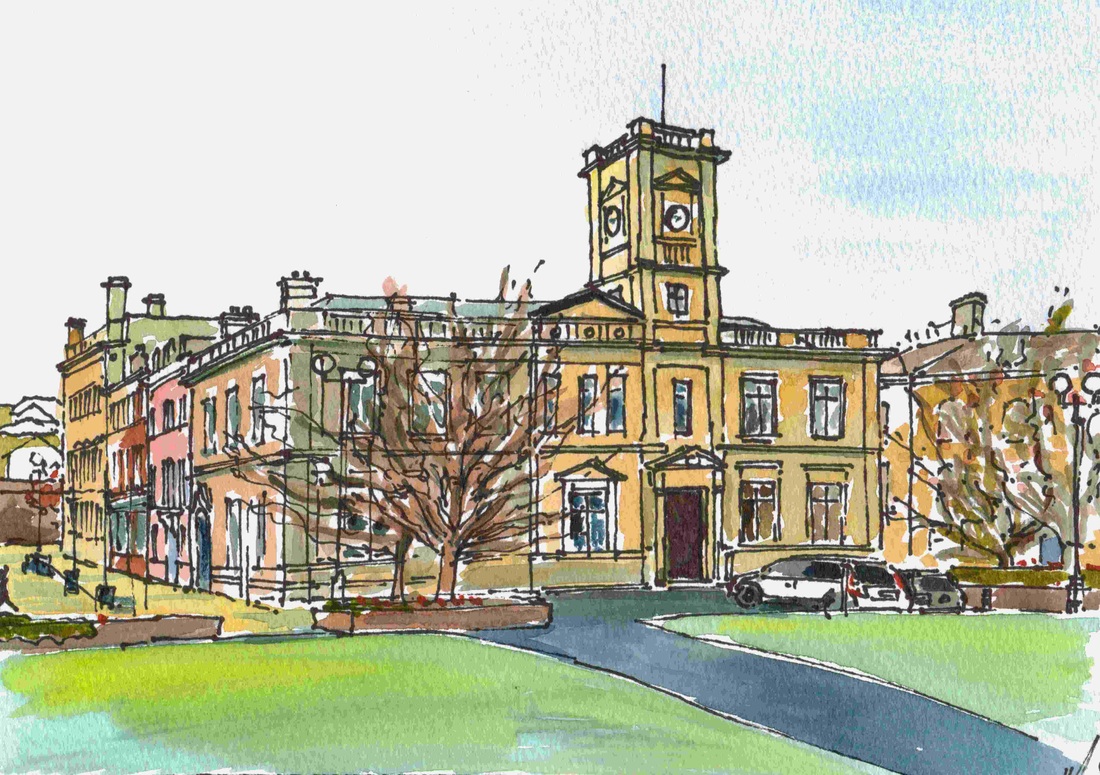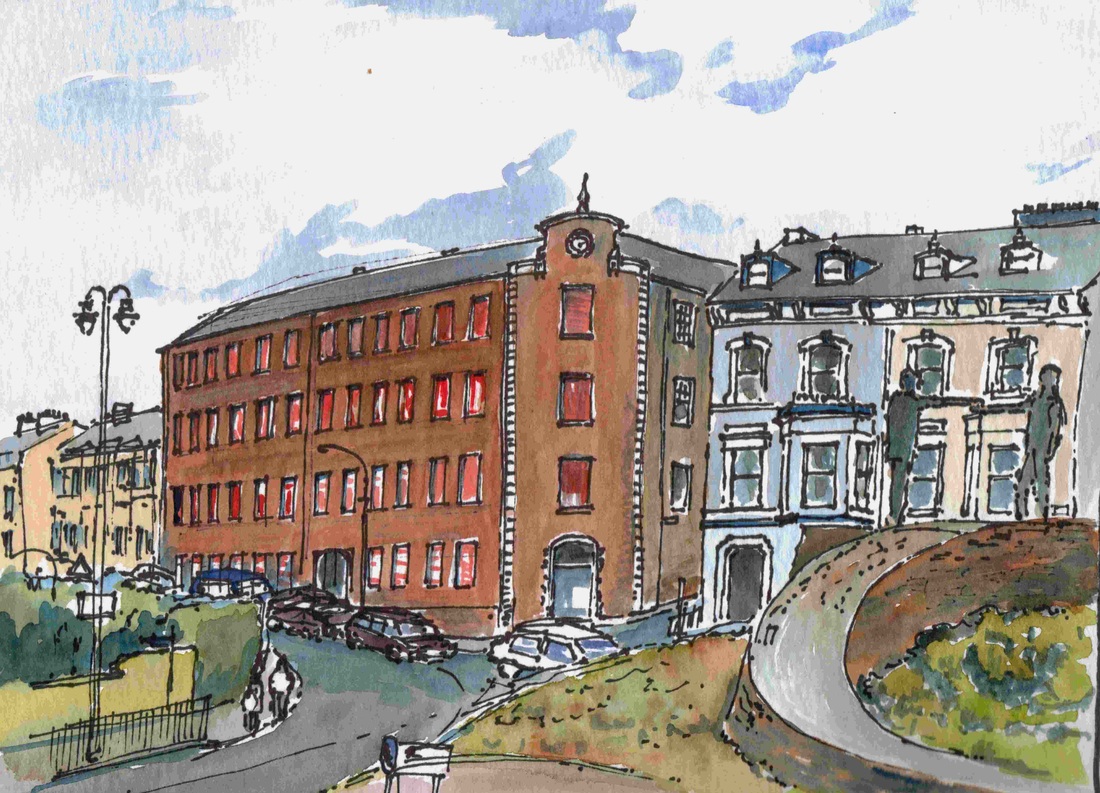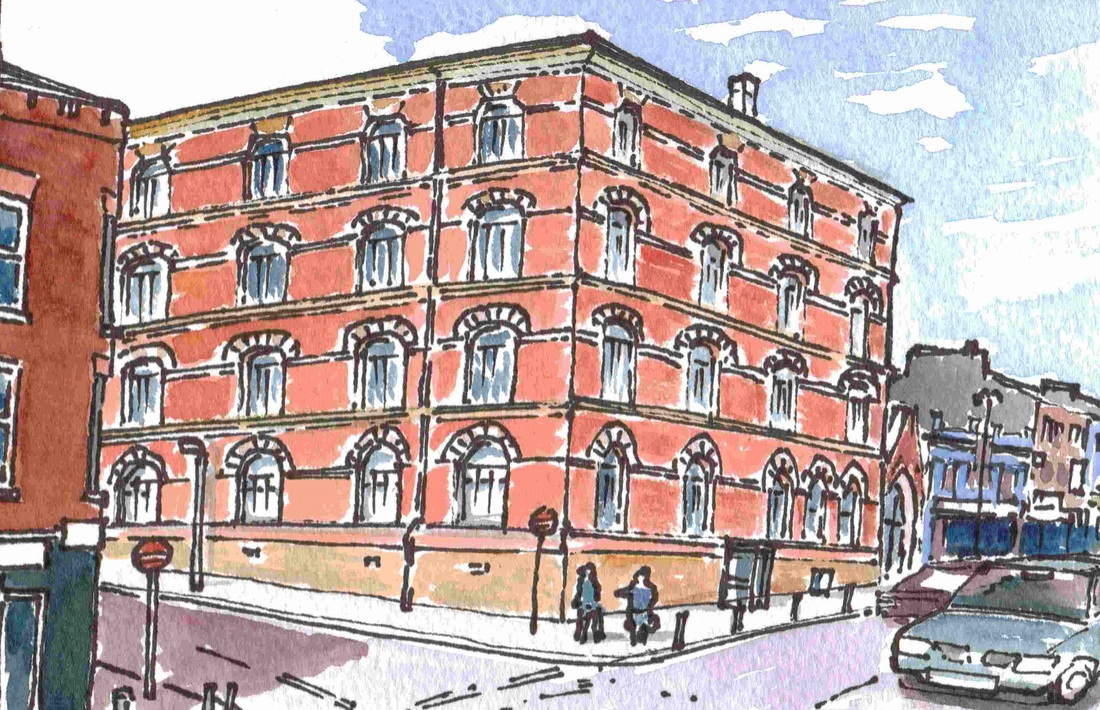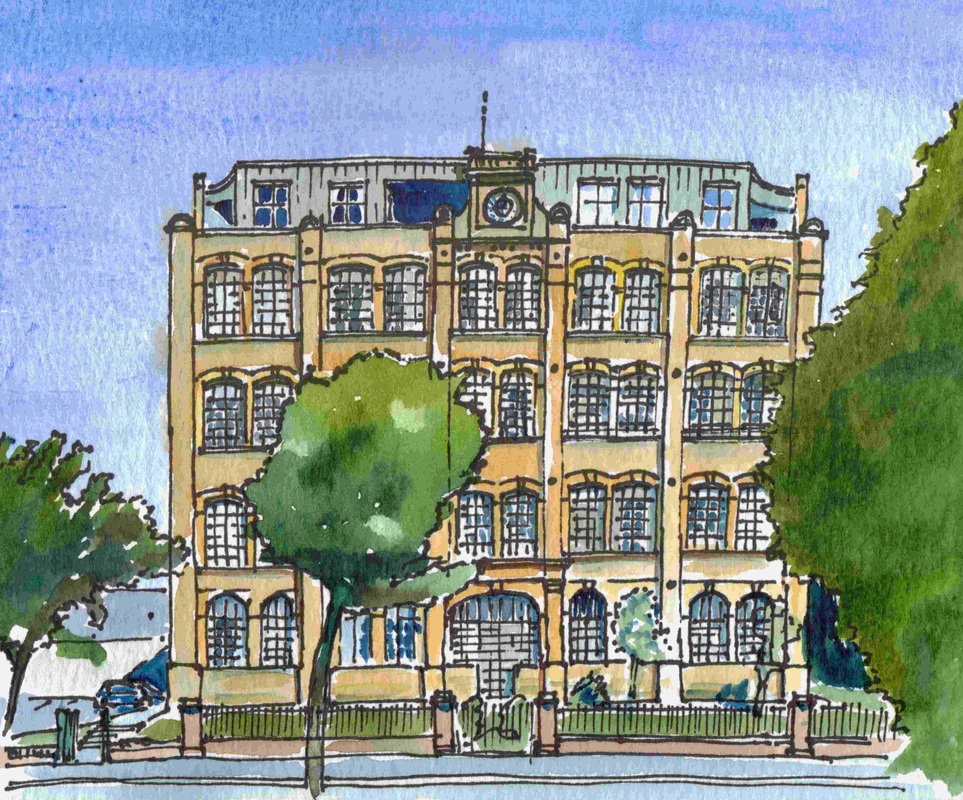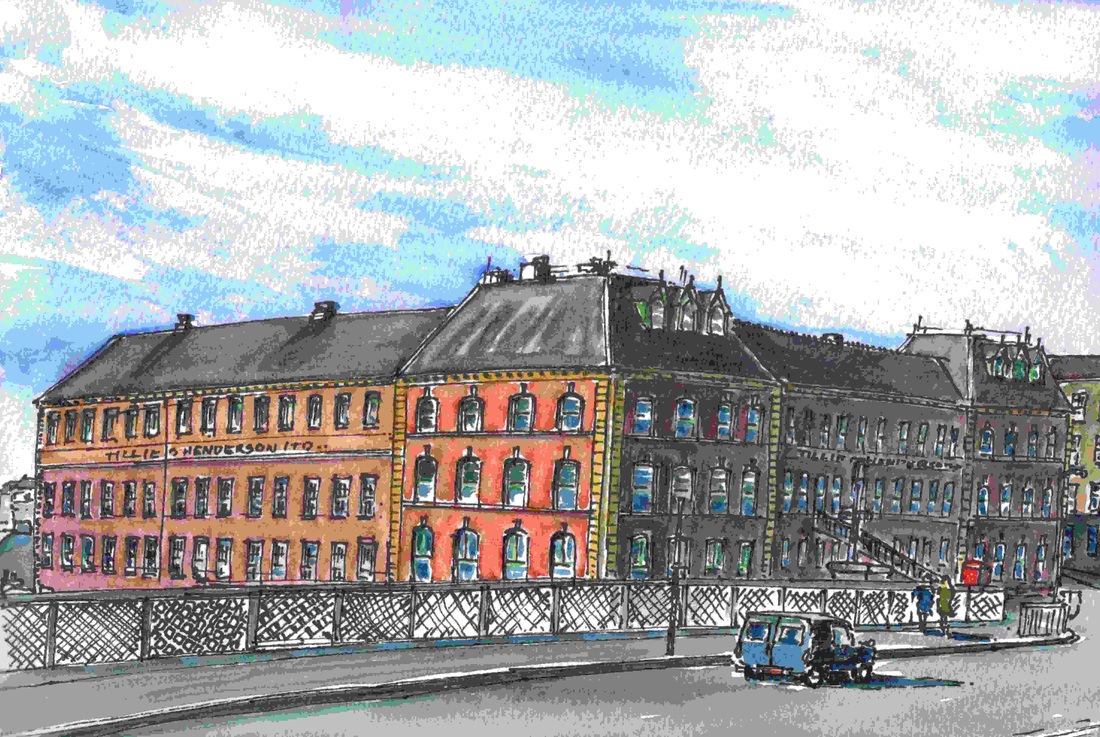Industry
|
The city expanded during the century behind new quays from the bridge along the Strand Road to where the Sainsbury’s Supermarket is now. Quays also developed in the Waterside. Made of larch, these timber wharves and most of their associated stone and brick warehouses have now gone but the Harbour Office of 1882 on Harbour Square gives a strong idea of this prosperity. It is a fine stone building in an Italianate Style. Along with the Customs House (1876) on one side and the Guildhall of 1887 (rebuilt 1912) on the other, they present a formal civic façade purposely designed to reflect the power and prosperity of the mercantile city.
Industry became associated with the shirt factories as the century progressed. This was generated by the close link by sea to Glasgow and the ready supply of labour. While initially a cottage industry with work hired out in small amounts, increased mechanisation led to the construction of a number of factories near the central area. The earliest to survive is the Abercorn factory of 1863 at the end of Craigavon Bridge. It follows the simple Georgian pattern of regular sash windows with small panes but has a decorative flourish at the curved corner above its clock. Later factories such as the former Welch Margetson factory on Carlisle Road reflect the changing architectural styles of the period. It is a good example of Ruskinian Gothic. Many of these large buildings are remarkable for the ease with which they accommodate themselves to their surroundings. The Star Factory on Foyle Road (1899) is, however, a conscious landmark and presents a very considered stone façade to the river. The great loss however, was that of the Tillie and Henderson factory (1856) which was demolished after a series of fires in 2002. This one building told the story of the industry better than any other in the city. It was the first mechanised factory and had a severe Georgian façade to the river. It expanded in the later nineteenth century and took on the form of a French ‘hotel de Ville’ in the 1860s to Carlisle Square at the end of a newly constructed metal bridge. This architectural development reflected both changing architectural fashions and the growing importance of the industry. But the building was also used as a case study in Marx’s Das Kapital linking it to the wider European story of the Industrial Revolution. Because it also had a small school within its roof it also reflected the benign interest of some industrialists in promoting education among the children of their workers. |
|
|

